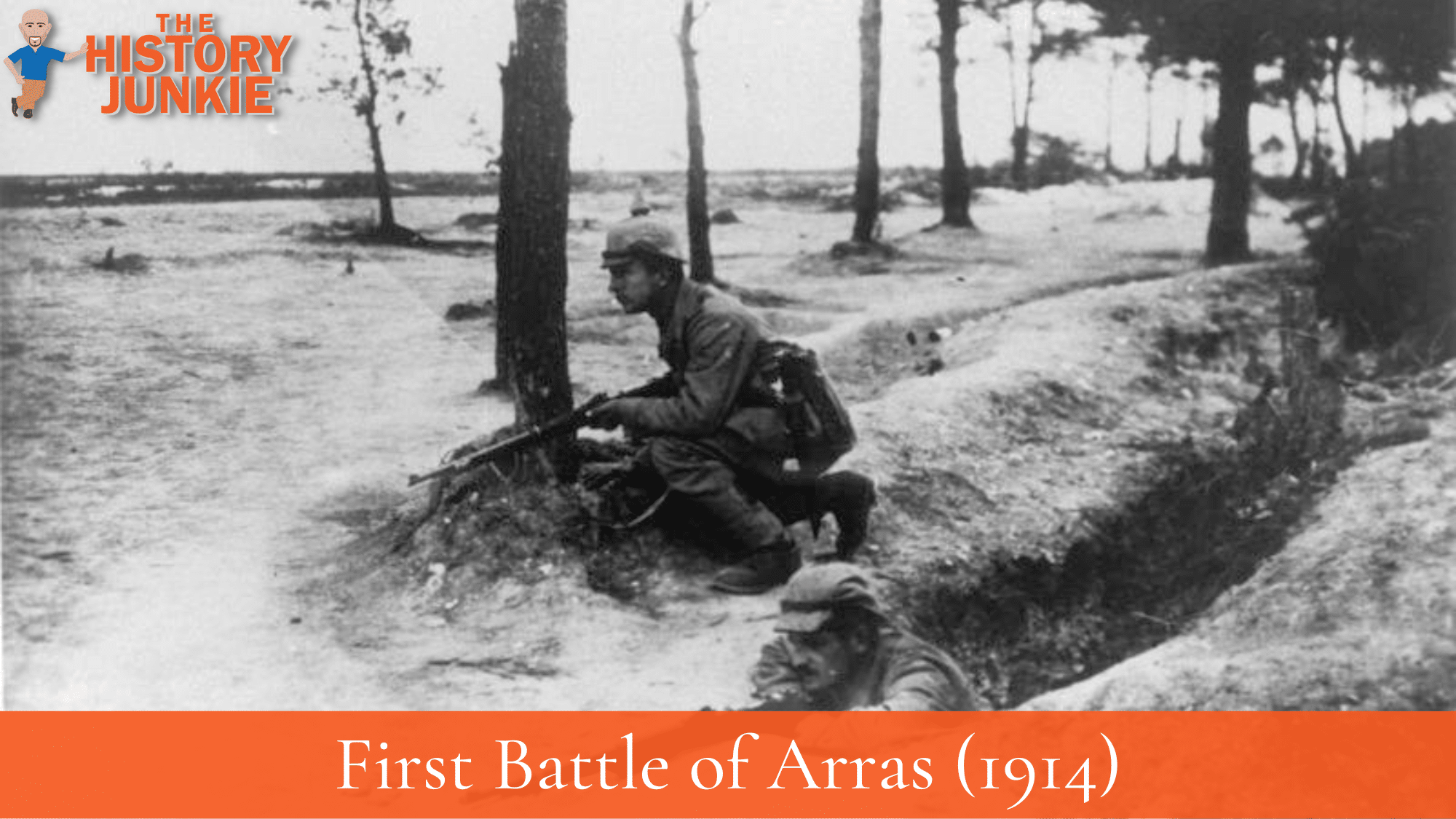The First Battle of Arras was fought between the French and German armies during the "Race to the Sea" during World War 1.

At the First Battle of Picardy, each side had attacked expecting to advance around an open northern flank and found instead that troops had arrived from further south and extended the flank northwards.
Jump to:
The Tenth Army, led by General Louis Maud'huy, attacked advancing German forces on October 1 and reached Douai, where the 6th Army under Crown Prince Rupprecht counter-attacked, as three corps of the German 1st, 2nd, and 7th armies attacked further south.
The French were forced to withdraw towards Arras, and Lens was occupied by German forces on October 4.
Attempts to encircle Arras from the north were defeated, and both sides used reinforcements to try another flanking move further north at the Battle of La Bassée (October 10 – November 2).
The reciprocal flanking moves ended in Flanders when both sides reached the North Sea coast and then attempted breakthrough attacks during the First Battle of Flanders.
Overview
Together with the Battle of Albert, the Battle of Arras formed an attempt by the French to outflank the Germans in a north-westerly movement towards the English Channel - the 'race to the sea.'
Designed to outflank the German forces by advancing along a line between Arras and Lens, the attack began on 1 October once sufficient troops had been collected to comprise Maud'huy's new Tenth Army.
Whilst initial progress towards Douai was good, effective counter-attacks by Crown Prince Rupprecht's Sixth Army, transferred from Lorraine, obliged Maud'huy to order a withdrawal.
Nevertheless, in the face of heavy attacks by three corps of the German First, Second, and Seventh Armies, the French managed to hold on to Arras, although Lens was lost to the Germans on October 4, by which time-fighting had subsided, and the line began to stabilize once again.
With the failure of French outflanking maneuvers at Albert and Arras, activity moved further north towards Flanders, where the Germans saw success.
Conclusion
The result was indecisive, and the French still maintained control of railroads behind enemy lines that allowed them to quickly maneuver their men from point A to point B.
The Germans had to take long detours, which caused delays.
These delays would allow the Allies to get their men in better defensive positions and inflict heavier casualties on the Germans while the Allies learned how to reduce their casualties.
